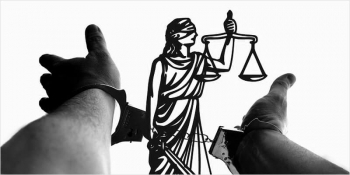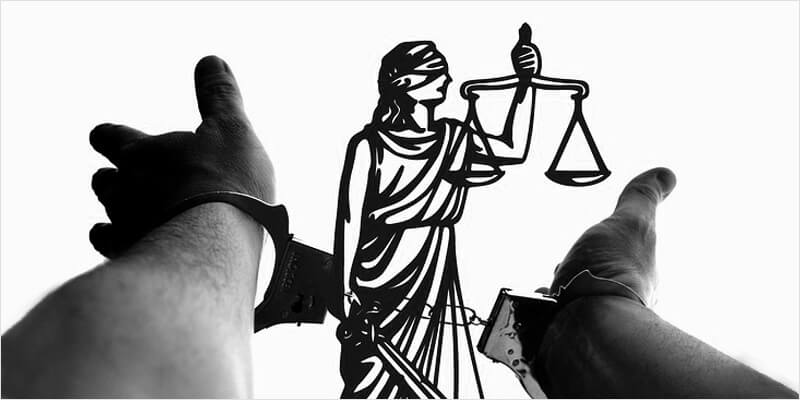
.png) Jacob Peenikaparambil
Jacob Peenikaparambil

While granting bail to Gujarat MLA Jignesh Mevani, a Judge in Barpeta in Assam, Aparesh Chakravarty, reprimanded the state police for lodging a “false FIR” and “abusing the process of the court and the law”. As per the media reports the Judge also said, “Converting our hard-earned democracy into a police state is simply unthinkable. If the instant case is accepted to be true…which it is not, then we will have to rewrite the criminal jurisprudence.”
However, the Gauhati High Court stayed these observations, stating that the “observations are beyond the jurisdiction of the lower court.” Mevani was arrested by Assam Police on April 21 over tweets against the Prime Minister Narenda Modi and he was taken to Assam. Although he was granted bail on April 25 by a local court, he was rearrested for allegedly molesting and abusing a woman police officer. The court found that the second case was totally false.
The police and the state that are expected to protect the human rights and fundamental rights of citizens often indulge in the violation of the rights of citizens. The arrest of Mevani is a clear case of political vendetta. Two days after his release, Mevani lashed out against the BJP and Prime Minister Narendra Modi, saying that the cases lodged against him were part of a “pre-planned conspiracy” to “destroy and defame him” ahead of the Assembly polls in Gujarat. “Some Godse bhakts who are sitting in the PMO were behind my arrest,” he told reporters at the Congress headquarters in New Delhi. False and frivolous cases against dissenters and critics of the governments add to the problem of pendency of cases at different courts in India.
The Chief Justice of India (CJI) at a joint conference of Chief Justices of High Courts and Chief Ministers of states held recently called for an overhauling of the criminal justice system to solve the issue of pendency of cases and highlighted the issues haunting the system. He said that the Legislature, the Executive and the Judiciary must work together to tackle the problem of pendency of cases.
According to a study by PRS Legislative Research in September 2021, 44 million cases are pending in different courts in India. In 2019, there were only 35 million pending cases. Covid 19 and the consequent lockdowns increased the volume of backlog of cases. The pendency of cases leads to the overcrowding of prisons. As per the Prison Statistics India 2022, 75% of the prisoners are undertrials. The report also states that two in three under trial inmates belonged to either Scheduled Castes, Scheduled Tribes or Other Backward Classes in 2020 and their share did not reduce in 2022. Members from these communities are vulnerable to illegal detentions, false confessional statements and arrests and they often have no means to seek bail.
Another finding mentioned in the report is that two in three undertrials eligible for release were still in jail. Section 436A of the Code of Criminal Procedure provides for release of undertrials who have undergone more than half the prison term for the accused offenses. The poor and the uneducated in India often do not get justice because they don’t have either knowledge about the intricacies of the law or the financial resources to employ lawyers. Since most of the undertrials, who languish in jails, are poor, neither the government nor social workers are paying much attention to them. Even those who are involved in the Prison Ministry do not seem to have taken any serious effort to get the poor undertrials out of the jails.
The Prime Minister while addressing the joint meeting of the High Court Judges and the Chief Ministers appealed to the Chief Justices of High Courts to ensure that bail is granted to undertrials. But the executive is also equally responsible for the increase in the number of undertrials in prisons. The whole criminal justice delivery system from registration of FIR to the conviction of the accused and the conditions in the prisons needs an overhaul. The address of the CJI at the joint meeting of the High Court Chief Justices and Chief Ministers has given sufficient tips for the overhaul of the system.
The CJI said that the governments are the biggest litigants, and account for 50% of the cases filed in various courts. “It’s beyond my understanding as to why intra and inter-departmental disputes of the government or fights between PSUs and the government end up in courts. If service laws are applied fairly in matters of seniority, pension and so on, no employee will be compelled to go to courts,” said the CJI. Instead of making efforts to settle disputes by putting in place clear policies and internal dispute settlement mechanisms, often the governments pass on the burden to the judiciary.
According to the CJI, the key to good governance is the Constitution, but the opinions of law departments are often not sought in the rush to implement executive decisions. Even though the CJI did not mention about the misuse of laws by the governments, it is one of the significant reasons for piling up cases in different courts. The BJP governments both at the Centre and the States and the investigative agencies like NIA, CBI, and ED are profusely using the draconian laws like Unlawful Activities (Prevention) Act, National Security Act, and Sedition law to silence government’s critics and those who have dissenting views.
The very low conviction in the cases filed under the draconian laws proves that many cases were filed by the state and non-state actors to take revenge on political rivals or those who oppose the policies and actions of the government or the political party that leads the government. For example, out of the 5,992 people arrested under UAPA during 2016-2019 only 132 (2.2%) were convicted. Siddiq Kappan, a journalist who travelled to Hathras to report on the death of a 19-year-old girl, was arrested under UAPA. He has been in jail since October 2020.
The Chief Justice also mentioned that court decisions remain unimplemented by the government for years, resulting in contempt petitions which have become a new category of burden on courts. The deliberate inactions by governments, despite judicial pronouncements, are not good for democracy, he added.
Another reason pointed out by the CJI is ambiguities in legislation. “If the legislature passes a law with clarity of thought, foresight and people’s welfare in mind, the scope of litigation is minimised,” he said. When a political party has a brute majority in Parliament or Legislative Assembly it gets laws passed in a hurry without proper study and discussion. For example, the three controversial farm laws were first promulgated as Ordinances and later they were rushed through Parliament. The result was one year agitation by farmers leading to filing of hundreds of cases against the agitating farmers. Finally, the government withdrew the laws without any discussion in Parliament.
Often laws are passed in view of narrow political interests of the party in power, and not the wellbeing of people. The passing of Citizenship Amendment Act (CAA) is a clear example of a bad law that violates EQUALITY, one of the core principles of Indian Constitution. The constitutional validity of the CAA is challenged in the Supreme Court and the apex court is yet to pronounce its constitutionality. The passing of CAA led to nation-wide protests, and filing hundreds of cases by the state governments against the protesters. If the law was passed after wider discussion and arriving at consensus among the different stakeholders, a lot of unnecessary litigation could have been avoided. When a law is conceived as an instrument to discriminate against a particular community or a group of people, it becomes divisive and burdensome on the judiciary.
Misuse of Public Interest Litigation (PIL) is an important reason for burdening the courts. “These days, PIL has become a tool for those who want to settle political scores or corporate rivalry. Realising the potential for misuse, courts are now highly cautious in entertaining the same,” CJI Ramana said. In the 1970’s PILs were encouraged and supported by the Supreme Court of India. Public Interest Litigation is the power given to the public by courts through judicial activism. However, the person filing the petition must prove to the satisfaction of the court that the petition is being filed for a public interest and not just a frivolous litigation. It is unfortunate that some vested interests are misusing it in order to defame the PIL itself and depriving the poor sections of society from accessing legal remedies.
Alarming low judge-population ratio of 20 judges per 10 lakh people is another reason for rising caseload. Judge-population ratio is 50 judges per 10 lakh people in developed countries. Hence there is a need for a quicker process of appointing judges and increasing sanctioned strength of judges. The CJI also emphasized the need for improving physical infrastructure for the judiciary.
The CJI and the PM agreed on the issue of conducting court procedures in the local language. Currently local language is used in most of the lower courts. But use of local language in the High Courts and the Supreme Court needs long term planning because judges of High Courts are transferred from one High Court to another.
It is a welcome move that the high offices of the executive and the judiciary came together for a day to exchange views for finding solutions to the issues related to the criminal justice system, especially pendency of cases. The judiciary and the executive together have to initiate the process to implement the excellent suggestions emerged from the joint meeting. It is pertinent to quote as a conclusion of this write up what the CJI said. “As the country completes 75 years of Independence, the focus should be on creating a judicial system where justice is easily available, is quick and for everyone”.